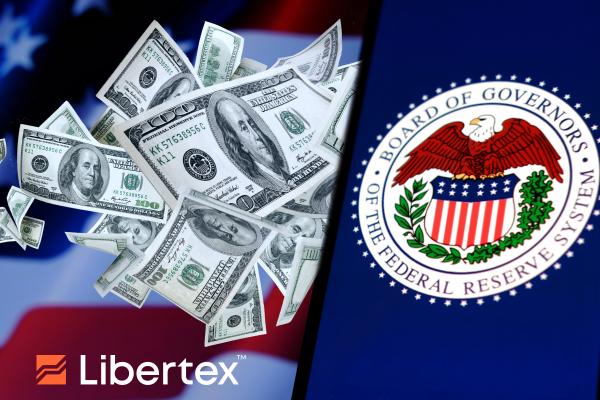After more than a year of rate hikes and hawkish monetary policy, not just from the Fed but from central banks the world over, many risk-on investors had all but lost hope. Interest rates increased from historic lows of 0.08% in February 2022 to over 5.3% in July of this year. This policy was essentially mirrored by the Bank of England and the Reserve Bank of New Zealand, with the European Central Bank and the Reserve Bank of Australia lagging only slightly behind at 4.5%. It might not seem like much, but the knock-on effect for anyone with debt — from mortgage holders to people with a car payment — has been nothing short of devastating. For fixed-income investors and those with savings, however, the relatively higher rates were a welcome boon, especially once price pressure had been brought under relative control.
But now that inflation is down near the golden 2% target at 3.1% in the US and 2.4% in the EU (per November's numbers), it looks like the Fed and ECB are finally preparing to pivot. This has led many of Wall Street's most committed bears to admit they may have been a little hasty in their pessimistic prognoses for stocks, which have counter-intuitively been rising steadily throughout this rate hike cycle. So, what does this mean for both equities and risk-off assets like government bonds and precious metals into 2024? In this article, we'll explore the likely implications of a more dovish central bank policy on these key asset classes.
Taking stock(s)
Following a massive crash in the wake of the COVID bubble, US stocks have been steadily gaining ground since the start of 2023. This occurred despite depressing predictions from the likes of Morgan Stanley and Piper Sandler and Co., suggesting that higher rates would push the US economy into a recession. Since the start of the year, the Dow Jones IA, S&P 500, and Nasdaq 100 are up 13%, 24%, and a whopping 54%, respectively. While rates were already up nearly 4% when the bull run began, the pace of the increases slowed significantly during the first half of 2023 and increments were reduced from 0.5% to 0.25%.
It's well known that the stock market tends to lead real economic data, and the 'smart money' likely pre-empted the end of the Fed's rate-hike cycle in July. Now, with Powell last week all but confirming the hikes are over and even hinting at cuts next year, Wall Street strategists have become much more optimistic about stocks for 2024. Major players, including Bank of America, Deutsche Bank AG, and BMO Capital Markets, have all now predicted that the S&P 500 will hit or surpass 5,000. Goldman Sachs has even gone as far as to revise its forecast just one month after setting it, predicting that the S&P 500 will rise another 9% by year's end to hit 5,100.
It seems, then, that it's no longer a question of "if" the stock market will rise but rather "by how much". Investors would do well, however, to keep watching the Fed minutes in the months that follow for any changes in stance from the regulator.
Not-so-fixed income
For around fifteen years now, fixed-income assets like T-bills, debt-based securities, and other cash-like assets have been generating uncharacteristically low returns. The reason for this, of course, has been the ultra-low central bank interest rates introduced following the 2008 Great Financial Crisis. In an unexpected benefit of the recent economic downturn, the series of rapid Fed rate hikes following the collapse of Silicon Valley Bank have seen yields on 3-month and 6-month Treasury bills hold steady above 5% since March of 2023. Quality corporate bonds have also been up around this level for much of the year. And though inflation was 'stealing' much of the real-world gains that investors could make on these kinds of assets, it was hoped that since inflation was creeping back towards its 2% target, there might be an opportunity for more conservative investors to book some actual gains.
Unfortunately, however, recent rhetoric from Powell would suggest that these atypically favourable conditions for fixed-income assets are likely to be short-lived. The US regulator is looking to engineer a soft landing for the economy, but some economists have warned that they could be risking the opposite outcome by pivoting to a dovish stance too soon. Apollo Global Management's Chief Economist Torsten Slok warned in a recent whitepaper that "higher borrowing needs by the US Treasury, the loosening of yield-curve control policy in Japan, and reduced buying and diminished inventory of US debt held by China" could all lead to a need for a return to more hawkish policy next year.
For now, it would seem the best way to play the Federal Reserve's pivot toward monetary easing is to load up on shorter maturity debt (such as 3-month and 6-month notes) that still offers a yield solidly above 4%. Since the situation is still very dynamic, investors will have to remain vigilant.
Trade stocks, bonds and more CFDs with Libertex
Libertex offers a wide range of CFD products in a variety of underlying asset classes, all with industry-standard leverage and long and short trading options. From commodities, forex and crypto to stocks, ETFs and options, Libertex provides CFDs in virtually all major assets. In addition to major US indices like the S&P 500, Dow Jones Industrial Average and Nasdaq 100, Libertex also provides a selection of iShares Treasury Bonds CFDs with varying maturities. What's more, with Libertex and its multi-award-winning trading app, you can keep your entire diverse portfolio in one easy-to-access location. For more information or to create your own trading account, visit www.libertex.com/signup today!


